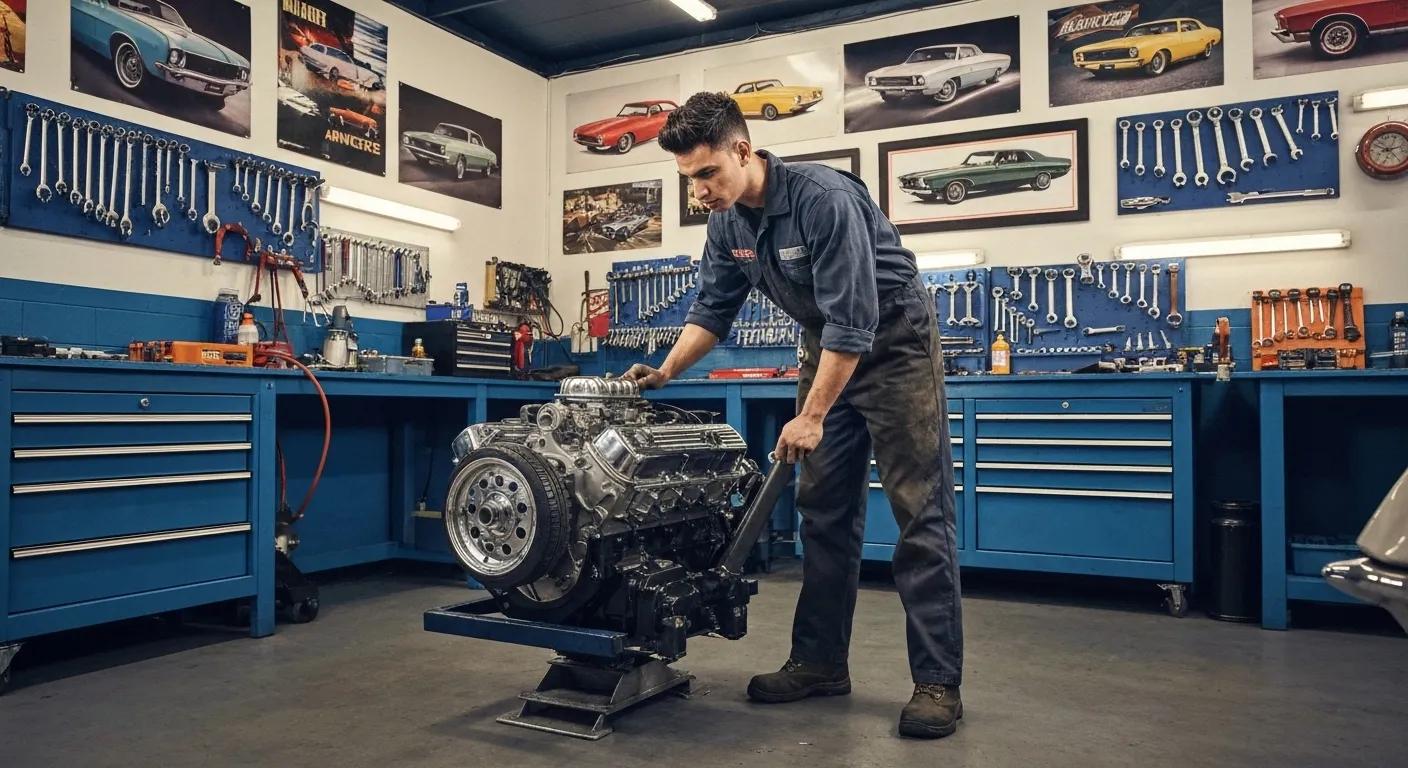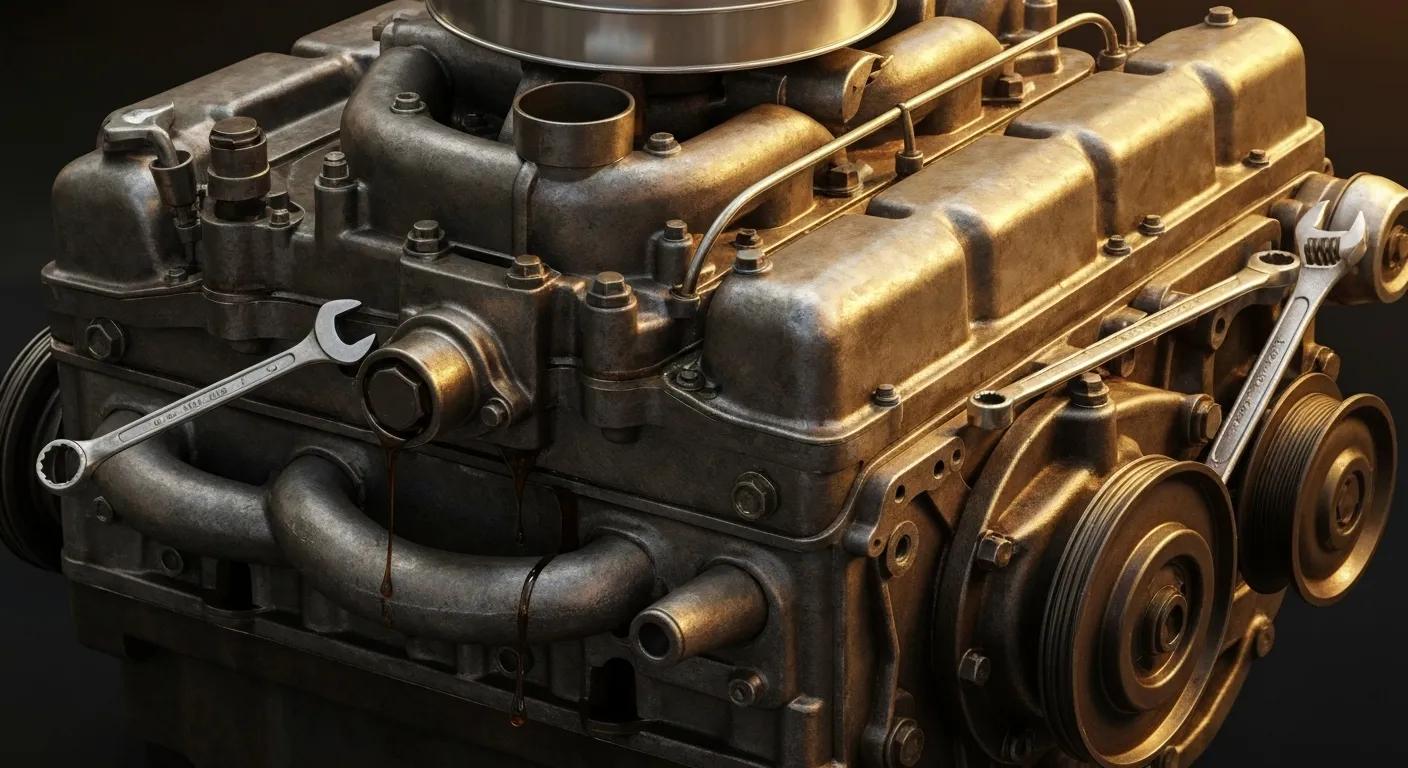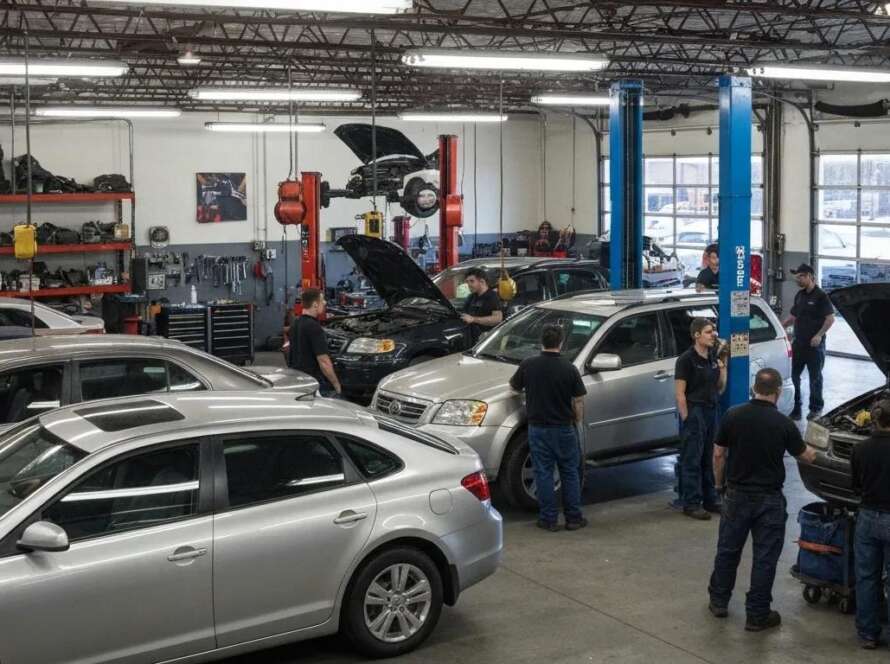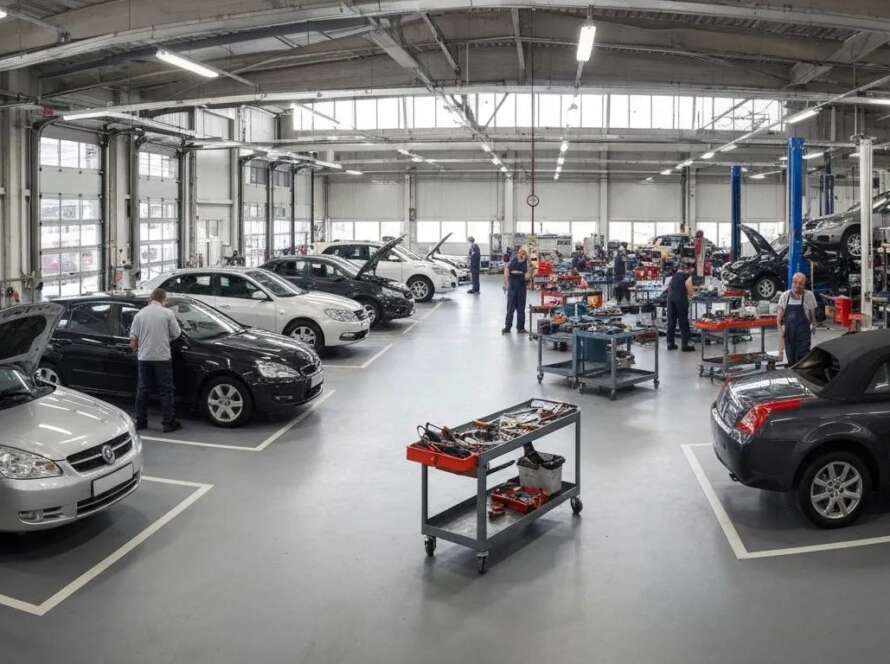
Understanding Common Auto Repair Issues and Their Estimated Costs for Smart Car Owners
Car owners today face rising vehicle maintenance expenses and unexpected repair bills, with U.S. repair costs up nearly 20% since 2022. This guide reveals how to recognize the most common auto repair issues, anticipate their associated costs, diagnose problems effectively, and adopt preventative maintenance to extend your vehicle’s lifespan. You’ll learn symptom checklists for engine, brake, transmission, and electrical faults; cost breakdowns with parts and labor estimates; step-by-step diagnostic methods; maintenance schedules that save money long term; extended warranty insights; and how costs vary by vehicle class and emerging technologies. Armed with this knowledge, smart car owners can budget accurately, avoid costly surprises, and preserve reliability.
Rising Vehicle Maintenance Costs
Vehicle maintenance expenses in the U.S. have increased significantly, with repair costs rising nearly 20% since 2022. This increase impacts car owners’ budgets and emphasizes the need for proactive maintenance and informed decision-making.
Motorist Assistance Program (2024)
This source supports the article’s introduction by providing context on the increasing costs of vehicle repairs.
What Are the Most Common Auto Repair Issues and Their Typical Symptoms?
Automotive systems often signal trouble before a breakdown. Recognizing early warning signs reduces repair complexity and costs.
Which Symptoms Indicate Check Engine Light Problems?
A check engine light (CEL) illuminates when the engine control unit detects a malfunction. Common indicators include:
- Flashing or steady light signaling ignition misfires or emissions faults.
- Reduced power or hesitation during acceleration from faulty oxygen or mass airflow sensors.
- Rough idling and stalling caused by spark plug, ignition coil, or vacuum leaks.
Diagnosing CEL codes promptly prevents catalytic converter damage and more expensive engine repairs.
What Are the Signs of Brake System Wear and Failure?

Brake wear often manifests through audible and tactile cues:
- Squealing or grinding noises as brake pads thin out against rotors.
- Vibration or pulsation in the pedal or steering wheel indicating warped rotors.
- Spongy or low brake pedal feel when brake fluid leaks or master cylinder seals fail.
Addressing these symptoms early maintains stopping power and avoids rotor replacement.
How Can You Identify Common Engine Problems Early?

Engine issues present through performance changes and fluid anomalies:
- Overheating gauge spikes caused by coolant leaks, failing thermostats, or radiator blockages.
- Smoke from the tailpipe (blue for burning oil, white for coolant burn, black for rich fuel mix).
- Unusual knocking or pinging due to worn bearings or incorrect fuel octane.
- Oil or coolant puddles under the engine area signaling gasket or hose failures.
Early detection through regular fluid inspections preserves engine longevity.
What Are the Typical Symptoms of Transmission Issues?
Transmission faults often reveal themselves in shifting behavior and fluid condition:
- Delayed or harsh gear shifts from low fluid levels, worn clutches, or solenoid failures.
- Gear slipping under load indicating worn bands or torque converter problems.
- Transmission fluid leaks under the vehicle and dark, burnt-smelling fluid during service checks.
Tackling these signs early may allow a fluid flush rather than a full rebuild.
How Do Electrical System Faults Present in Vehicles?
Electrical faults can disrupt starting and onboard electronics:
- Dim or flickering headlights from a failing alternator or corroded battery terminals.
- Clicking starter sound when the battery or starter motor fails to engage.
- Dashboard warning lights (battery, ABS, airbag) illuminating erratically.
- Accessory malfunctions in power windows, infotainment, or climate control due to wiring shorts.
Systematic voltage and continuity tests pinpoint the faulty component before more extensive damage occurs.
How Much Do Common Auto Repairs Cost? Estimated Repair Costs Explained
Transparent cost estimates help you budget and negotiate with repair shops. The table below outlines average ranges for parts and labor in the U.S.
| Repair Type | Part Cost (USD) | Labor Cost (USD) |
|---|---|---|
| Check Engine Light Diagnosis & Fix | 50–200 | 100–300 |
| Brake Pad & Rotor Replacement (per axle) | 100–300 | 150–250 |
| Major Engine Repairs (head gasket) | 600–1,200 | 800–1,500 |
| Transmission Repair vs. Replacement | 500–2,000 | 500–1,500 |
| Electrical Component (alternator) | 150–400 | 100–200 |
These figures combine parts and labor; actual costs depend on vehicle model, region, and shop rates.
What Is the Average Cost to Fix Check Engine Light Issues?
On average, resolving a check engine light costs between $150 and $500, including diagnostic fees and replacing sensors or spark plugs. Minor fixes like tightening a loose gas cap may cost under $50, while catalytic converter repairs can exceed $1,000.
Check Engine Light Diagnostic Costs
Resolving check engine light issues can range from $150 to $500, including diagnostics and potential sensor or spark plug replacements. More complex issues, such as catalytic converter repairs, can significantly increase these costs.
RepairPal (2024)
This citation provides specific cost ranges for check engine light repairs, supporting the article’s discussion on repair expenses.
How Much Does Brake Pad and Rotor Replacement Typically Cost?
Brake pad replacement ranges from $100 to $200 per axle, and rotor resurfacing or replacement adds $100 to $150 per rotor. Total per-axle costs typically fall between $200 and $350, depending on part quality and shop hourly rates.
What Are the Repair Costs for Major Engine Problems?
Head gasket replacement averages $1,400 to $2,700, combining a $600–1,200 part cost with $800–1,500 labor. Full engine replacements range from $3,000 to $7,000, influenced by whether a remanufactured or new engine is used.
How Much Does Transmission Repair or Replacement Cost?
Minor transmission repairs, such as solenoid or seal replacement, average $500 to $1,000. A full rebuild costs $1,500 to $3,000, while a complete transmission swap spans $2,000 to $5,000, depending on whether the unit is new or remanufactured.
What Are the Typical Costs for Electrical System Repairs?
Alternator replacement falls between $250 and $600, including parts and labor. Starter motor repairs average $200 to $400, while battery replacements cost $100 to $250. Complex wiring or module diagnostics can add $100–$200 in shop fees.
How Can Smart Car Owners Diagnose and Address Auto Repair Issues?
Empowering yourself with diagnostic knowledge reduces unnecessary shop visits and improves negotiation confidence.
How to Diagnose Check Engine Light Codes Effectively?
Use an OBD-II scanner to read diagnostic trouble codes (DTCs) and identify failing components:
- Plug the scanner into the OBD port under the dashboard.
- Turn ignition to “On” without starting the engine.
- Retrieve error codes and consult the code list for potential causes.
- Clear codes and test-drive to confirm repair completion.
Performing these steps prevents guesswork and pinpoints issues quickly.
When Is DIY Repair Feasible vs. Professional Help Needed?
DIY repairs suit tasks with low complexity and safety risk:
- Replacing filters, bulbs, wiper blades, and batteries.
- Performing fluid top-offs and fuse swaps.
Professional intervention is essential for:
- Brake system overhauls, transmission work, and major engine repairs.
- High-voltage EV component service or advanced driver-assistance systems (ADAS) calibration.
Knowing your skill level and using service manuals ensures safety and success.
What Tools Are Essential for Basic Vehicle Diagnostics?
A compact toolkit for smart diagnostics includes:
- OBD-II code reader for engine and emission codes.
- Digital multimeter to test voltage, resistance, and continuity.
- Jack and jack stands to safely lift the vehicle.
- Basic hand tools (ratchet set, screwdrivers, pliers).
Keeping these tools on hand accelerates troubleshooting and minor repairs.
How to Recognize Urgent Repair Needs to Avoid Further Damage?
Critical repair indicators demand immediate attention:
- Engine overheating gauge in the red zone.
- Brake failure causing loss of stopping power.
- Steering or suspension collapse accompanied by loud clunks.
- Smoke or leaking fluids under the vehicle.
Addressing these urgent signs swiftly prevents collateral damage and higher bills.
What Preventative Maintenance Practices Help Avoid Costly Repairs?
Routine upkeep preserves component health and reduces unexpected breakdowns.
Which Regular Maintenance Tasks Extend Vehicle Lifespan?
Consistent servicing of key systems includes:
- Oil and filter changes every 3,000–7,500 miles.
- Tire rotations and alignments every 5,000–10,000 miles.
- Brake fluid and coolant flushes per manufacturer schedules.
- Air filter and spark plug replacements at recommended intervals.
Following these tasks maintains engine efficiency and safety systems.
How Does Preventative Maintenance Save Money Long-Term?
Investing in maintenance prevents major failures:
- Regular oil changes can prevent engine bearings wear and $2,000 engine rebuilds.
- Timely brake service avoids rotor damage and $500± rotor replacement.
- Cooling system flush prevents overheating and $1,500 head gasket repairs.
These savings compound over a vehicle’s lifetime, delivering high ROI.
What Are DIY Maintenance Tips for Smart Car Owners?
Perform simple checks at home to catch issues early:
- Inspect tire tread depth and pressure monthly.
- Check fluid levels (oil, coolant, brake) visually before long trips.
- Clean and lubricate door hinges, locks, and window tracks.
- Monitor belt and hose condition for cracks or bulges.
Regular at-home inspections spot wear before it worsens.
When Should You Schedule Professional Maintenance Services?
Rely on trained technicians for:
- Transmission services including fluid changes and filter replacements.
- Complex diagnostics using dealer-level scan tools.
- ADAS calibration after windshield or sensor work.
- Major system overhauls such as suspension or engine timing belt replacement.
Scheduling these services at manufacturer intervals ensures warranty compliance and peak performance.
What Should Car Owners Know About Extended Warranties and Repair Coverage?
Extended warranties offer financial protection but require careful evaluation.
What Repairs Do Extended Car Warranties Typically Cover?
Typical coverage includes:
- Powertrain components (engine, transmission, drivetrain).
- Electrical systems (alternator, starter, wiring harness).
- Air conditioning and heating core components.
- Seals and gaskets associated with covered parts.
Coverage limits and deductibles vary; always review contract specifics.
What Are the Pros and Cons of Purchasing an Extended Warranty?
Extended warranties provide:
- Predictable repair costs with fixed deductibles.
- Peace of mind against high-cost failures.
However, consider:
- Upfront premium costs that may exceed expected repairs.
- Exclusion clauses for wear-and-tear or pre-existing conditions.
- Provider reliability—choose reputable underwriters to ensure claim fulfillment.
How to Choose the Right Extended Warranty for Your Vehicle?
Select a plan by evaluating:
- Coverage scope—powertrain only vs. bumper-to-bumper.
- Deductible level and payment terms.
- Provider reputation and claim processing record.
- Contract duration matching your vehicle ownership timeline.
A tailored warranty aligns protection with anticipated repair needs.
Is an Extended Warranty Worth It for High-Cost Repairs?
Extended coverage pays off when major component replacement costs exceed warranty premiums and deductibles combined. For transmission or engine rebuilds costing $3,000–$7,000, a $1,000–$1,500 premium may offer net savings, especially in high-mileage vehicles.
How Do Repair Costs Vary by Vehicle Type, Brand, and Technology?
Repair expenses shift substantially based on vehicle class, luxury features, and emerging powertrains.
How Do Repair Costs Differ Between Economy and Luxury Cars?
Luxury vehicles use specialized parts and higher-hourly labor rates, leading to 20–40% higher repair bills than economy models. For example, brake pad replacement on a compact sedan may be $150–$200 per axle, whereas a luxury SUV can exceed $350 per axle due to premium materials and advanced brake systems.
What Are the Cost Differences for SUVs vs. Sedans?
SUV repairs often cost 10–25% more than comparable sedans because of heavier components and higher suspension complexity. Wheel alignment for an SUV can run $100–$150, while a sedan alignment typically costs $70–$100.
How Do Emerging Technologies Like EVs Affect Repair Costs?
Electric vehicles have fewer moving parts, reducing routine maintenance like oil changes and transmission services. However, battery pack replacements can cost $5,000–$15,000, and specialized high-voltage system diagnostics carry premium labor rates of $150–$200 per hour.
What Impact Do Tariffs and Supply Chain Issues Have on Repair Prices?
Global parts shortages and tariffs on imported components inflate part costs by 10–30%. Delayed part availability can extend repair time and labor charges, increasing final invoices and underscoring the value of local sourcing or remanufactured alternatives.
What Are the Most Frequently Asked Auto Repair Questions and Their Answers?
Below are concise, self-contained answers to key owner concerns.
What Are the Most Common Causes of a Check Engine Light?
A check engine light typically stems from loose gas caps, faulty oxygen sensors, bad spark plugs, or catalytic converter inefficiency.
How Much Does It Cost to Replace Brake Pads and Rotors?
Brake pad and rotor replacement ranges from $200 to $350 per axle, combining parts and labor for standard vehicles.
When Should You Replace Your Transmission Fluid?
Most manufacturers recommend changing automatic transmission fluid every 30,000–60,000 miles to maintain smooth shifting and prevent gear wear.
How Can You Tell If Electrical Repairs Are Needed?
Electrical issues surface as flickering lights, slow cranking, dashboard warning lights, or non-functional accessories, confirmed through voltage and continuity testing.
What Are the Warning Signs of Engine Overheating?
Engine overheating reveals itself through rising temperature gauges, steam or coolant leaks, and unusual engine bay odors—signals to stop driving immediately.
Smart car owners who understand these symptoms, cost estimates, and maintenance strategies can proactively manage vehicle health, optimize repair budgets, and extend the service life of their automobiles. By combining early detection, transparent cost planning, and targeted preventative care, you’ll drive with confidence and avoid expensive surprises.




